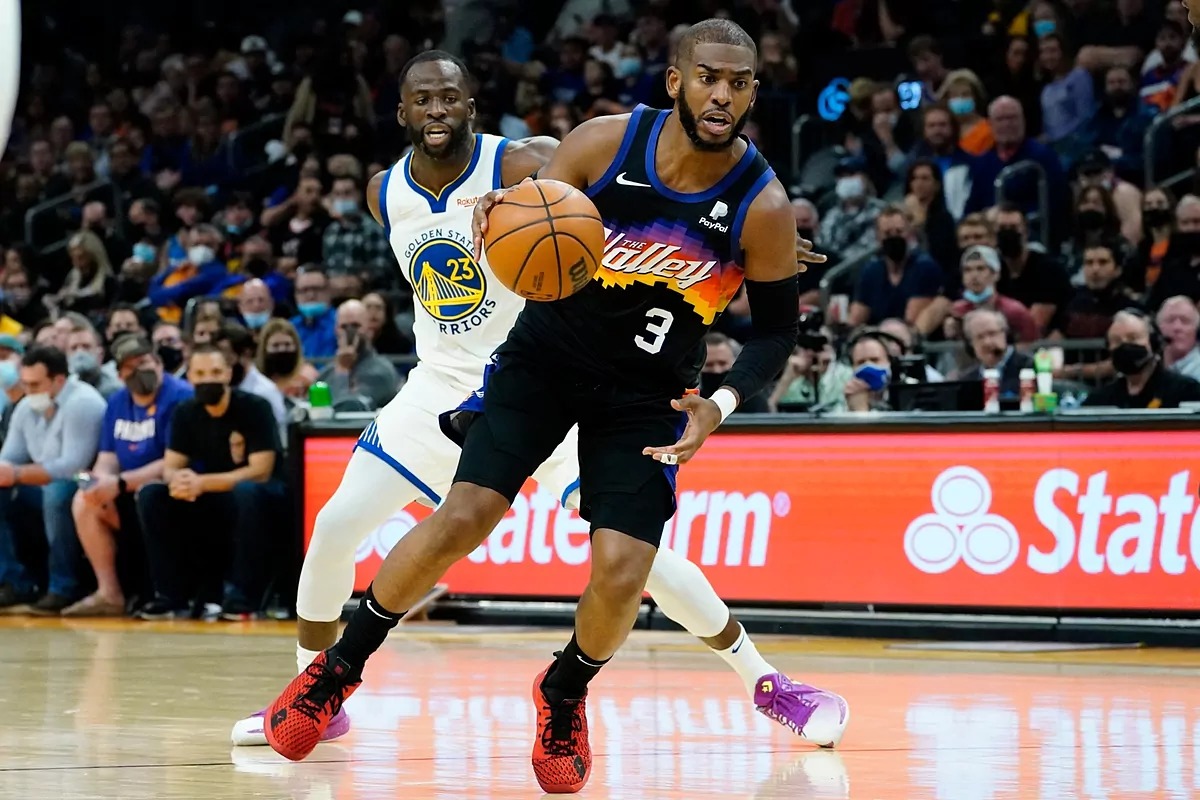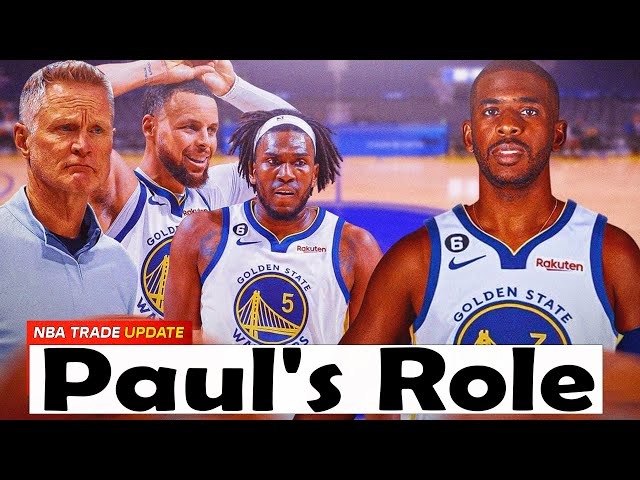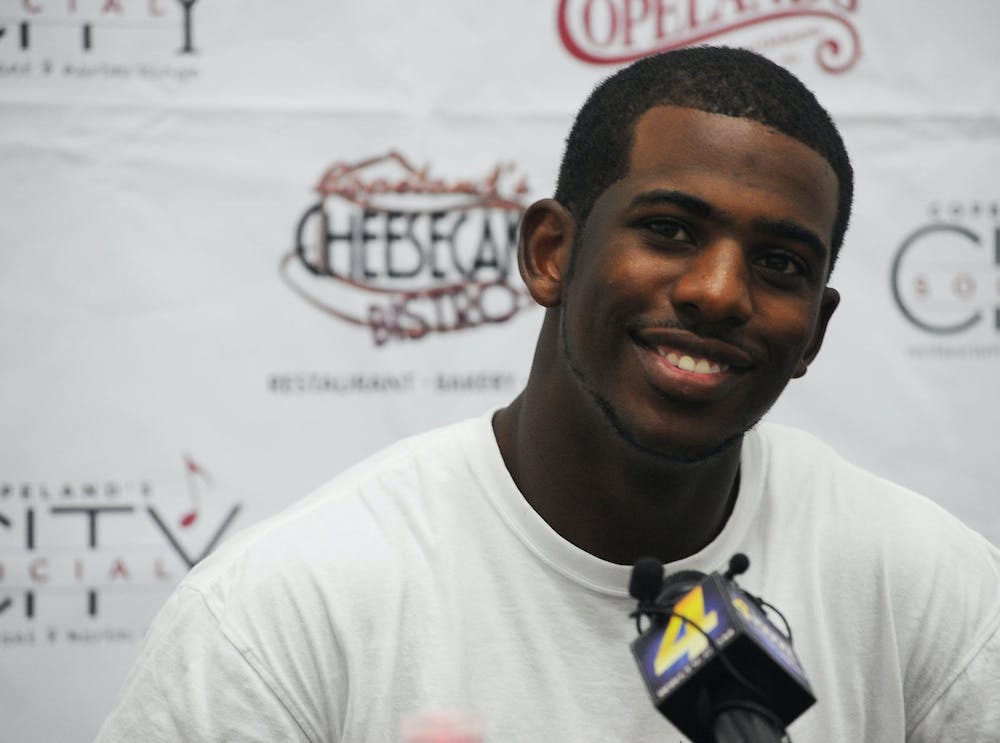On June 22, news broke that the Golden State Warriors had traded their supposed point guard of the future, Jordan Poole, to the Washington Wizards for the aging veteran, Chris Paul.
This trade understandably left a large portion of the NBA questioning what was going on in San Francisco. However, in order to try to understand the reasons for such a polarizing trade, we must first look at the events that led up to the move.

Fresh off a remarkable 2022 season that saw them crowned NBA champions for the seventh time, the Golden State Warriors looked to be in a strong position to defend their title. However, as 2023 saw unfold, this retention fell rather flat on its face.
This has led many to question what exactly went wrong.
The seemingly most obvious issue that plagued the Warriors all season was the difference in records between their home and away games. The Dubs were about as close to a bipolar team as you can get, sporting a home record of 33-8 (third best in the entire NBA) yet a road record of 11-30 (fourth worst in the NBA).
If we dive a bit deeper, a recurring concern throughout the entirety of the Warriors dynasty emerges: an inability to keep up with the opposition in non-Stephen Curry minutes.
By taking a look at the statistics, the Warriors were a staggering +8 in the offensive rating (ORtg) with Curry on the court. This would have been equivalent to first in the league where the Kings set records for the highest ORtg ever. In comparison, Curry’s backup Poole had a had a terrible -7 ORtg.
Speaking of Poole, it is impossible to tell the story of the Warriors 2022–23 season without discussing the contract extension (as well as the extracurriculars with his teammate Draymond Green) that set up what would be a series of unfortunate events.
After a very impressive playoff run in 2022, which saw Poole explode onto the biggest stage of basketball, expectations were sky-high. He began his off-season by signing a mammoth four-year, $140 million contract extension that seemed to designate him as the future. Despite this, things began to unravel after a disagreement in practice with his teammate Green escalated into a punch-up. Once the season began, things did not improve for Poole either. While his availability was second to none, playing in all 82 games and scoring the most points for the Warriors all season, the rest of his game left much to be desired.
A lack of defensive hustle combined with lazy turnovers (fourth most in NBA) and inefficient shot-chucking at times (94 effective field goal percentage, the second lowest of his career) culminated in a season that caused many to be unimpressed.

Fast forward to the offseason and the advent of a new front office with the promotion of Mike Dunleavy Jr. to General Manager, the Warriors decided that their franchise needed to go in a different direction in order to maximize the prime of their star players.
The answer they came up with? Chris Paul.
As time has passed by, there has been much debate and discussion about how exactly head coach Steve Kerr will try and integrate Paul into the already complex Warriors system. One doesn’t have to be an analyst to recognize that there is an inherent philosophical difference between the style of basketball that Paul has historically played, compared to that of Kerr and the Warriors.
While Paul has played on three different teams over the past five years, all of them had a common denominator: being slow-paced, methodical and relying on the pick-and-roll. This is shown through the fact that over the last five years, Chris Paul led teams have been in the bottom 10 of league-wide pace every single year.
Conversely, the Warriors represent the complete antithesis to the “Chris Paul style,” focusing on fluid off-ball movement, fast pace and a lack of offensive stagnation.

While the pessimist may view this solely as an immiscible combination of conflicting styles, much like if someone were to try and mix oil and water, there is also a reality where these differing approaches may combine to form a team unlike anything previously seen.
Throughout NBA history, there has never been a team that has had arguably two of the five greatest point guards to ever live in the same lineup. In the case of Paul, while he isn’t in his prime anymore, there is still a world where he can provide valuable playmaking and mid-range shotmaking that could contribute to a winning team.
Unlike the failed experiment of Jordan Poole running the second unit, if utilized off of the bench, Paul could be the veteran presence needed in order to stabilize the younger players (Moses Moody, Jonathan Kuminga) of the Warriors. Additionally, it gives Kerr a different offensive look to throw out in short spurts to confuse any defensive schemes that are thrown his way.
However, in more recent times, there has been discussion that Paul may actually take a starting role to begin the year. If this was to happen, there would be the glaringly obvious problem of the overall size of the lineup.

As it is, the Warriors are already the smallest team in the NBA, with their tallest player being the newly signed Dario Saric, who is only 6’10. By starting Paul, the most obvious change would be to move Kevon Looney to the bench, create an uber small lineup with Stephen Curry playing the shooting guard position and create a number of defensive issues in a team that will already have problems in shutting down the reigning Finals MVP Nikola Jokic.
Finally, there is the possibility that the Warriors front office has no intention of even keeping Paul on the roster for an extended period of time. It would not be a foreign concept for the Warriors to have traded for an all star guard only to ship him off again at the trade deadline. It is entirely possible that this was purely an effort to recoup some of Paul’s trade value in order to trade for another piece that could help in a title push.
Is it a last-ditch hail mary from a floundering franchise coming off of a disappointing season, or will it turn out to be a visionary move that will result in one or even multiple championships?
Only time will tell, but fans can be assured that no matter what happens, this season’s Golden State Warriors will be must-see TV.